Abstract
Global eradication of poliomyelitis can be achieved by a programme strategy that includes achievement and maintenance of high immunization levels, effective surveillance to detect all new cases, and a rapid vigorous response to the occurrence of new cases. Regional eradication targets have already been set in Europe and the Americas. Possible impediments to eradication include the necessity to generate political and social will; managerial constraints; issues of vaccine efficacy, stability, and cost; and adequacy of surveillance. We believe that the impediments can be overcome and that with intensified effort and increased international collaboration, global eradication could be achieved as early as 1995.
Full text
PDF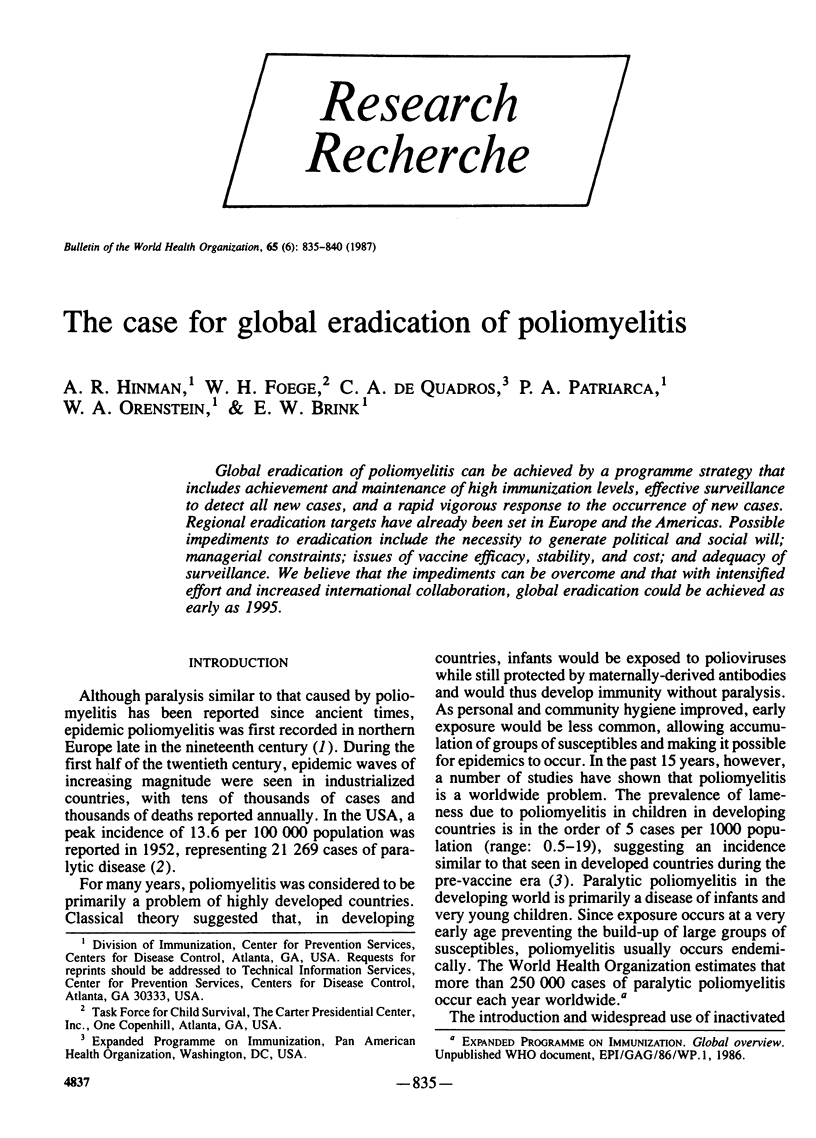
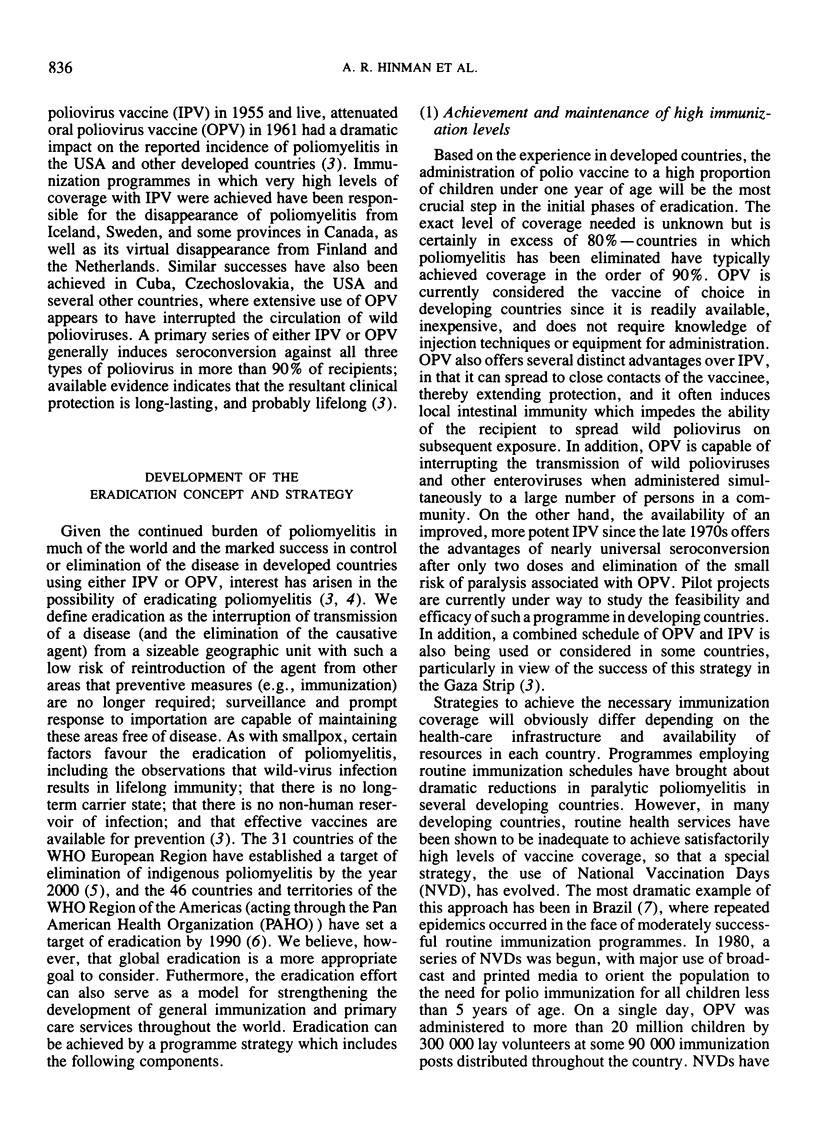
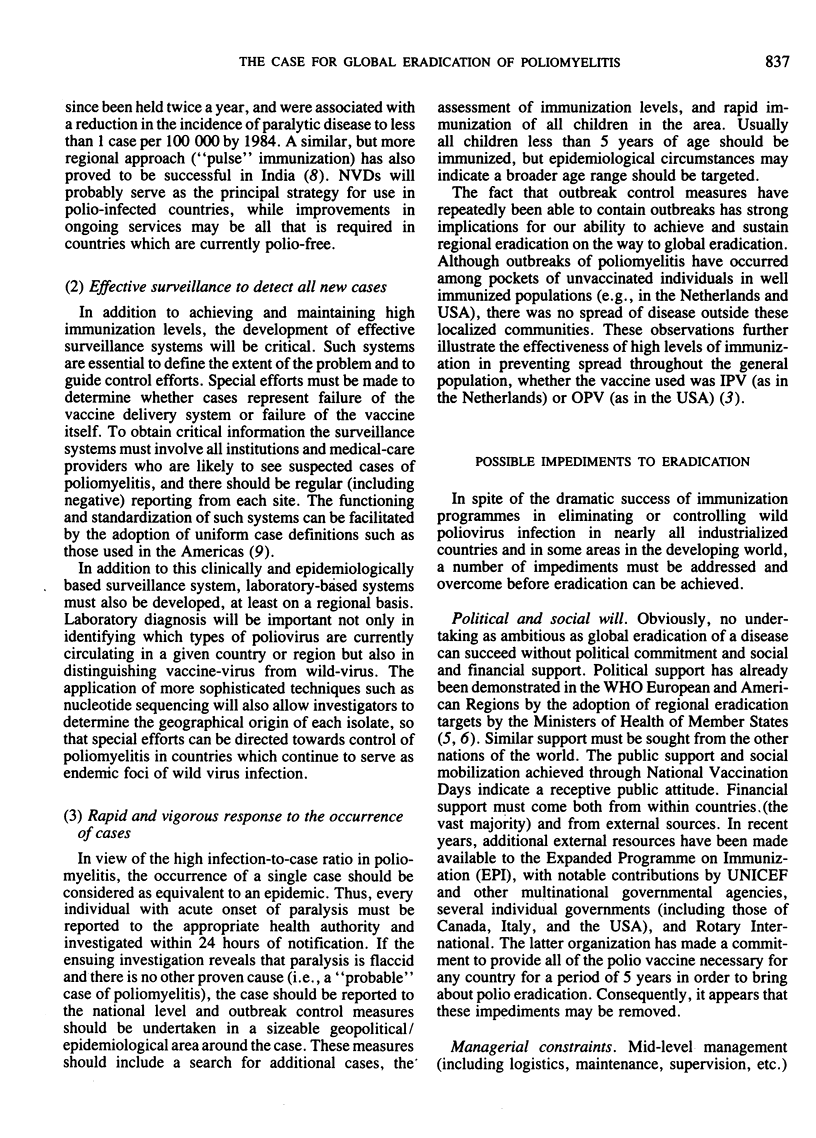
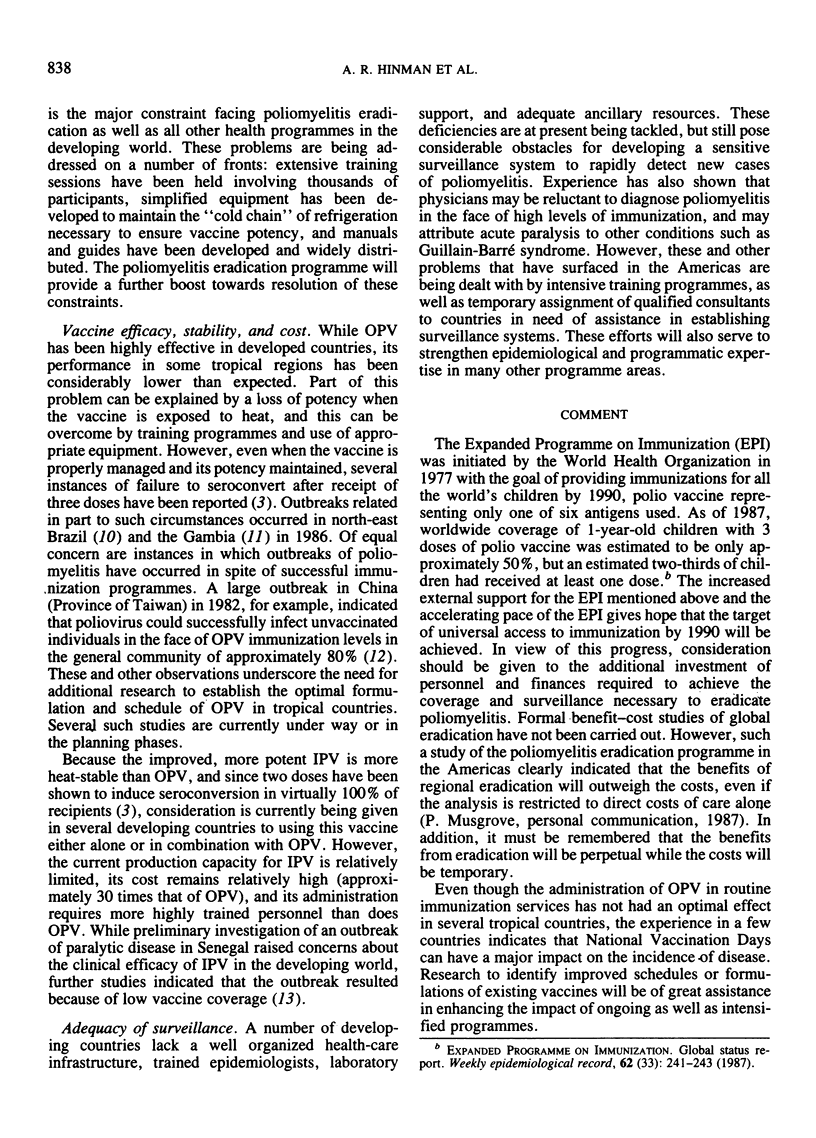
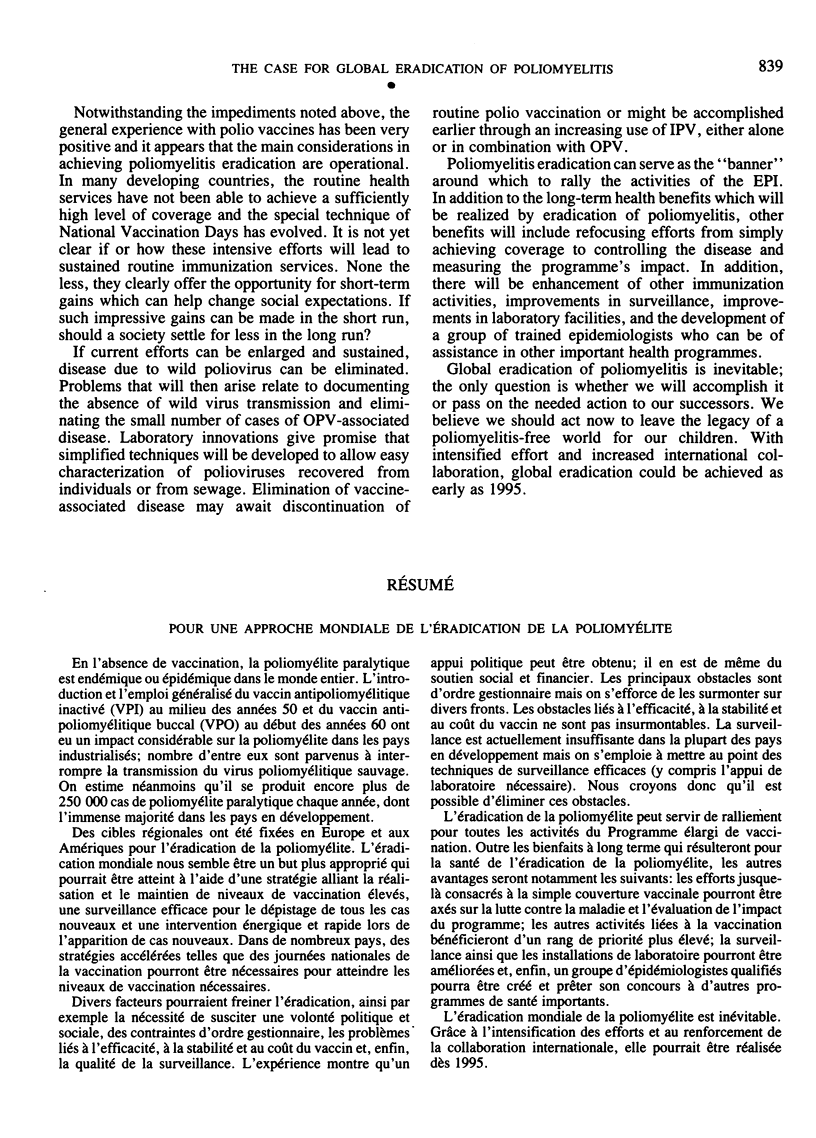
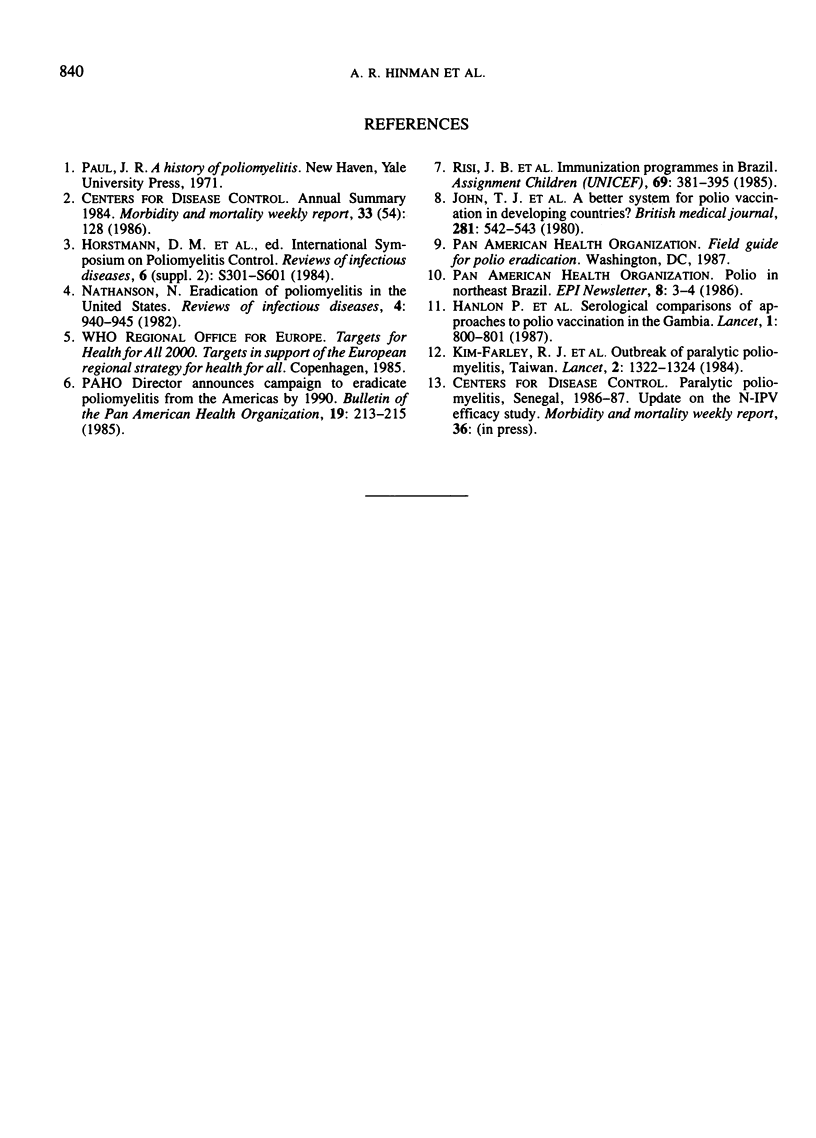
Selected References
These references are in PubMed. This may not be the complete list of references from this article.
- Hanlon P., Hanlon L., Marsh V., Byass P., Sillah H., Hayes R., Whittle H. C., Greenwood B. M. Serological comparisons of approaches to polio vaccination in the Gambia. Lancet. 1987 Apr 4;1(8536):800–801. doi: 10.1016/s0140-6736(87)92818-2. [DOI] [PubMed] [Google Scholar]
- Kim-Farley R. J., Rutherford G., Lichfield P., Hsu S. T., Orenstein W. A., Schonberger L. B., Bart K. J., Lui K. J., Lin C. C. Outbreak of paralytic poliomyelitis, Taiwan. Lancet. 1984 Dec 8;2(8415):1322–1324. doi: 10.1016/s0140-6736(84)90831-6. [DOI] [PubMed] [Google Scholar]
- Nathanson N. Eradication of poliomyelitis in the United States. Rev Infect Dis. 1982 Sep-Oct;4(5):940–950. doi: 10.1093/clinids/4.5.940. [DOI] [PubMed] [Google Scholar]


